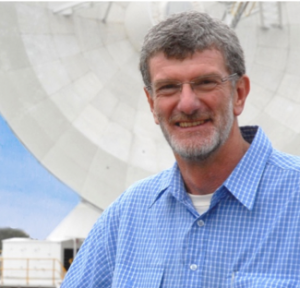New Director of Operations for world’s largest radio telescope

Following the retirement of Dr Gary Davis, Dr Lewis Ball has been appointed Director of Operations for the SKA Organisation, which oversees the design activities and construction preparations for the SKA.
Lewis has extensive experience leading astronomy research infrastructures around the world. Most recently, he led the US National Radio Astronomy Observatory (NRAO) research wing, supervising 80 scientists specialising in astronomy, computing and engineering as well as time allocation on the Very Large Array, the Green Bank Telescope and the Very Long Baseline Array, key radio astronomy facilities for the US and international research community.
Lewis has had two stints at CSIRO. First from 2001 – 2010 and then 2013 – 2016. In the latter period, Lewis led CSIRO’s Astronomy and Space Science (CASS) unit. CASS maintains and operates Australia’s national telescope facilities, including the Parkes Radio Telescope, the Australia Telescope Compact Array (ATCA), and the 36-dish Australian SKA Pathfinder (ASKAP) – an SKA precursor which is currently being commissioned and is located on the Murchison Radio-astronomy Observatory, the future home of SKA-low, in Western Australia.
Between 2010 and 2013, Lewis was Deputy Director of the international Atacama Large Millimeter/submillimeter Array (ALMA) observatory in Chile, where he oversaw its transition from construction to operations, and the successful delivery of ALMA Early Science. With its 66 antennas, ALMA is currently the world’s largest radio telescope at millimetre and submillimetre wavelengths, and a key source of technical & scientific expertise for the SKA.
Lewis has a background in theoretical astrophysics and space physics, with a BSc and PhD in Theoretical Physics from the University of Sydney, Australia. His scientific background is in the theory of shocks, particle acceleration, synchrotron emission and inverse Compton scattering and their application to supernovae, supernova remnants, pulsar winds and radio/X-ray transients.
Lewis will take up his position in November, with the current Head of Science Operations Antonio Chrysostomou acting as Interim Director until then.




